In today's fast-paced, digitally driven business landscape, CEOs, CIOs, and CMOs must keep a keen eye on their organization's technological edge. Staying ahead of the competition and delivering high-quality software applications in cloud environments is no longer a luxury but a necessity. To achieve this, organizations need to embrace Continuous Testing, a practice that empowers QA/SDET (Quality Assurance/Software Development Engineer in Test) teams to ensure that their software is always up to the mark. In this comprehensive guide, we will explore the critical role of Continuous Testing in cloud environments and explain how QA/SDET teams can seamlessly integrate it into their development and deployment pipelines.
The Need for Continuous Testing in the Cloud Era

In the digital age, businesses are increasingly reliant on software applications to drive their operations, customer engagement, and competitiveness. The advent of cloud computing has further transformed the way organizations build and deploy software. Cloud environments offer unparalleled scalability and flexibility, allowing businesses to deliver services faster and more efficiently than ever before. However, with these opportunities come challenges, especially in terms of ensuring the quality and reliability of software in the cloud.
Continuous Testing is the answer to these challenges. It's a systematic approach that evaluates software quality throughout its development and deployment lifecycle, ensuring that any potential issues are identified and resolved promptly. In cloud environments, Continuous Testing becomes a critical practice as it helps maintain the high standards expected by customers in an environment characterized by constant change.
Understanding Continuous Testing - A Brief Overview
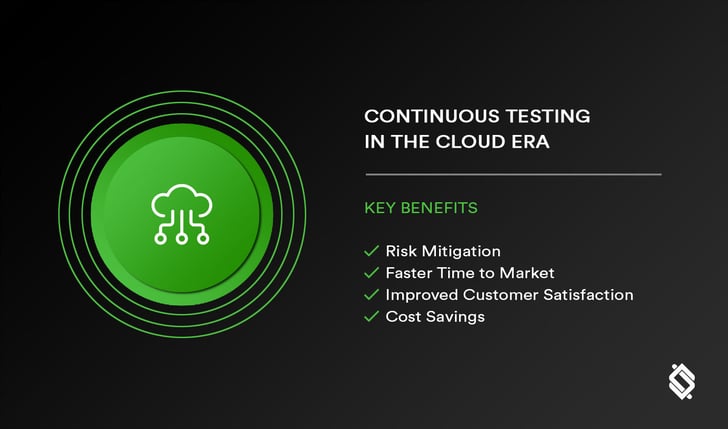
Continuous Testing is a comprehensive and ongoing process that integrates testing at every stage of the software development lifecycle, from coding and integration to deployment and beyond. It emphasizes the need for automated testing to provide immediate feedback on code changes and ensures that applications function as expected.
For CEO's, CIO's, and CMO's, understanding the fundamentals of Continuous Testing is crucial. It's a way to safeguard their organization's reputation, reduce costs, and maintain a competitive edge. Continuous Testing brings several key advantages that resonate with their roles:
Risk Mitigation: Early identification of defects reduces the chances of releasing faulty software, which can have disastrous consequences in terms of both financial losses and damage to an organization's brand.
Faster Time to Market: Continuous Testing accelerates the software development process by providing rapid feedback, enabling quicker decision-making, and ultimately speeding up the delivery of new features and enhancements.
Improved Customer Satisfaction: High-quality software leads to satisfied customers, which, in turn, boosts customer retention and loyalty. CEOs, CIOs, and CMOs all appreciate the value of happy customers.
Cost Savings: Detecting and fixing issues early in the development process is far less expensive than addressing them after deployment. Continuous Testing helps organizations avoid costly post-release issues.
Continuous Testing in Cloud Environments - The Perfect Match
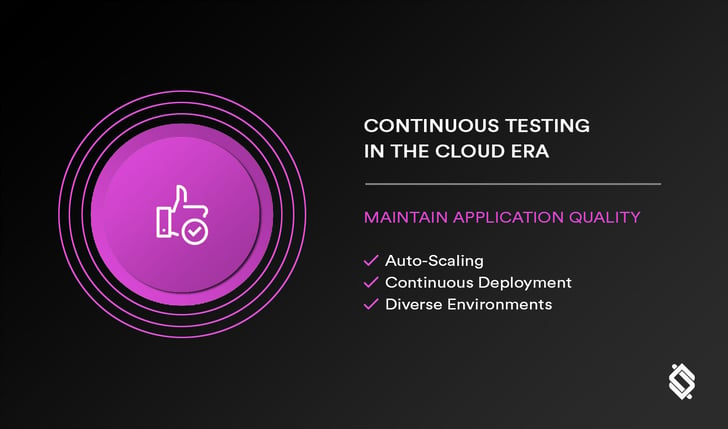
Cloud environments and Continuous Testing are a match made in tech heaven. Cloud computing allows businesses to swiftly adapt to market changes and efficiently manage their infrastructure. Continuous Testing, on the other hand, ensures that the software running on that infrastructure is always up to the mark.
In a cloud environment, where resources can be provisioned on-demand, Continuous Testing is essential for maintaining the quality of applications. Consider the following scenarios:
Auto-Scaling: Cloud applications can automatically scale to handle varying workloads. Continuous Testing ensures that new instances meet quality standards and that scaling doesn't introduce performance or reliability issues.
Continuous Deployment: Many organizations leverage continuous deployment in the cloud, meaning that code changes are pushed into production frequently. Continuous Testing verifies that each change is safe and doesn't negatively impact the application.
Diverse Environments: Cloud platforms often support multiple environments (e.g., development, testing, staging, production). Continuous Testing helps ensure consistency and quality across these environments.
The Role of QA/SDET Teams - Driving Quality from Within
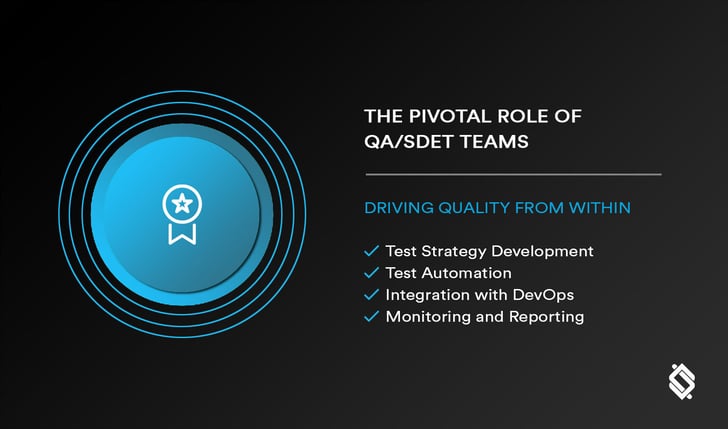
QA/SDET teams are the unsung heroes of the software development world. Their primary responsibility is to guarantee the quality of software, but they do much more than just that. In the context of Continuous Testing in cloud environments, they play a pivotal role in several ways:
Test Strategy Development: QA/SDET teams create a comprehensive test strategy that outlines the testing requirements for different stages of the software development and deployment process.
Test Automation: Automating tests is a critical component of Continuous Testing. QA/SDET teams are responsible for designing and maintaining test scripts that can be executed automatically.
Integration with DevOps: QA/SDET teams collaborate with development and operations teams, ensuring that testing is seamlessly integrated into the DevOps pipeline, resulting in a continuous testing culture.
Monitoring and Reporting: QA/SDET teams constantly monitor test results, provide feedback to developers, and generate reports that track the quality of the application over time.
Having a dedicated QA/SDET team is a strategic investment that translates into higher quality software, reduced operational risks, and more efficient development cycles. CEOs, CIOs, and CMOs should recognize the value these teams bring to their organizations.
Test Automation - The Cornerstone of Continuous Testing
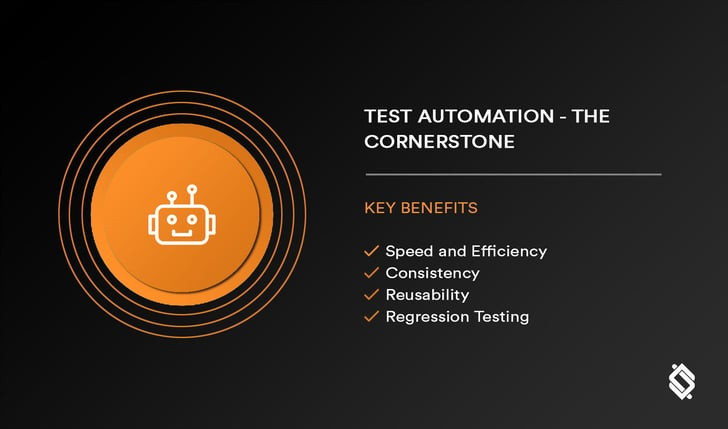
Test automation is at the heart of Continuous Testing. It's a practice where software tests are executed automatically, reducing the need for manual testing and ensuring swift feedback on code changes. Test automation offers several key benefits that align with the goals of executives:
Speed and Efficiency: Automated tests can run much faster than manual tests. This speed is essential for businesses aiming to release software updates rapidly.
Consistency: Automated tests are executed consistently, reducing the likelihood of human errors and ensuring that tests are conducted in the same way every time.
Reusability: Automated test scripts can be reused across different stages of the development and deployment pipeline, saving time and effort.
Regression Testing: Test automation enables continuous regression testing, ensuring that new code changes don't break existing functionality.
CEOs, CIOs, and CMOs should appreciate the role of test automation in minimizing risks, accelerating development, and maintaining high-quality software in the cloud.
Leveraging Cloud-Based Testing Tools - Unleashing the Power of the Cloud
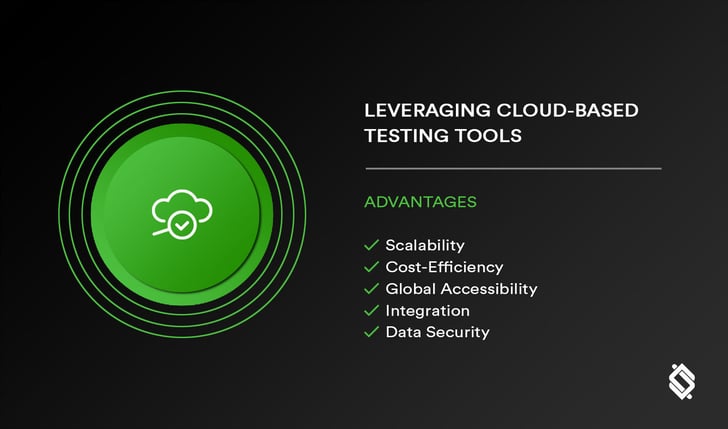
Cloud-based testing tools are the perfect companion for organizations adopting Continuous Testing in cloud environments. These tools offer a range of advantages that resonate with top-level executives:
Scalability: Cloud-based tools can be easily scaled to accommodate testing requirements, ensuring that resources are available when needed without capital expenditures.
Cost-Efficiency: Organizations can avoid investing in expensive hardware and software by utilizing pay-as-you-go models with cloud-based testing tools.
Global Accessibility: Cloud-based tools enable geographically dispersed teams to collaborate on testing efforts seamlessly, fostering a global approach to quality assurance.
Integration: These tools often integrate with popular development and DevOps platforms, making it easy to incorporate testing into the pipeline.
Data Security: Reputable cloud providers offer robust security measures, addressing concerns about data protection.
Embracing cloud-based testing tools empowers QA/SDET teams to execute tests at scale, reducing overhead costs and enhancing collaboration across the organization.
Rapid Feedback Loops - The Key to Maintaining High-Quality Applications
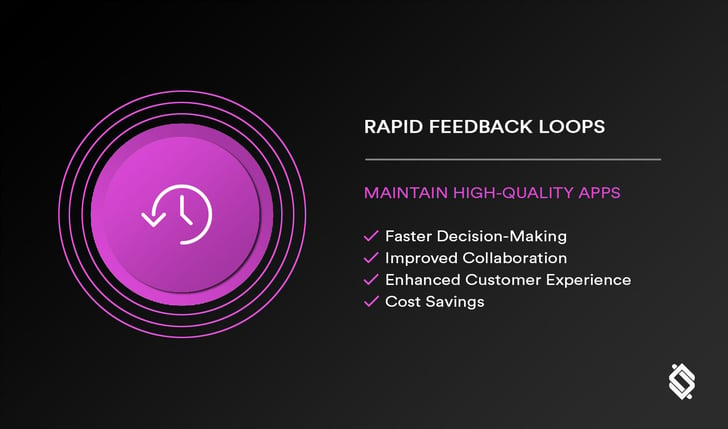
Rapid feedback loops are key to Continuous Testing. They ensure that issues are identified and addressed promptly, preventing defects from propagating through the development and deployment pipeline. For executives, this means:
Faster Decision-Making: Rapid feedback enables quicker decision-making, allowing organizations to respond to issues in real-time, thus reducing the time to market.
Improved Collaboration: Continuous Testing encourages close collaboration between QA/SDET, development, and operations teams, fostering a culture of shared responsibility for quality.
Enhanced Customer Experience: Quick issue resolution means fewer disruptions for end-users, resulting in a better customer experience and higher satisfaction.
Cost Savings: Identifying and addressing issues early in the development process significantly reduces the cost of fixing defects after deployment.
Challenges and Best Practices - Navigating the Continuous Testing Journey
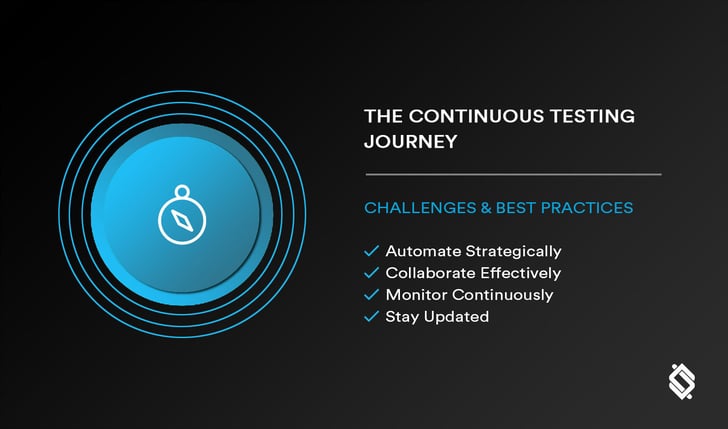
Implementing Continuous Testing in cloud environments is not without its challenges. However, by following best practices, organizations can overcome these challenges and reap the full benefits of this approach. Some key best practices include:
Start Early: Begin testing as soon as possible in the development process to identify issues at their source.
Automate Strategically: Focus on automating tests that bring the most value, balancing effort versus benefit.
Collaborate Effectively: Foster collaboration between QA/SDET, development, and operations teams to ensure everyone is aligned on quality goals.
Monitor Continuously: Continuously monitor test results, gather metrics, and use data-driven insights to improve testing processes.
Stay Updated: Keep abreast of the latest testing tools, methodologies, and industry trends to maintain a competitive edge.
Conclusion - Your Path to Cloud-Ready Quality Assurance

In the age of the cloud, quality assurance has never been more critical. CEOs, CIOs, and CMOs must recognize the pivotal role that Continuous Testing plays in ensuring the high quality of software in dynamic and rapidly changing cloud environments. By investing in QA/SDET teams, embracing test automation, leveraging cloud-based testing tools, and prioritizing rapid feedback loops, organizations can navigate the complexities of the cloud era with confidence.
Implementing Continuous Testing is not just about maintaining the status quo; it's about staying ahead of the curve, delighting customers, and securing a competitive edge in an ever-evolving digital landscape. So, start your journey towards cloud-ready quality assurance today, and watch your organization thrive in the cloud era.
Continuous Testing in the cloud is not a luxury; it's a necessity. Stay ahead, stay competitive, and stay cloud-ready.



